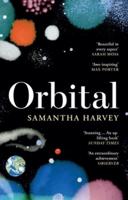Publisher's Synopsis
This historic book may have numerous typos and missing text. Purchasers can usually download a free scanned copy of the original book (without typos) from the publisher. Not indexed. Not illustrated. 1887 edition. Excerpt: ...of the early days of July, when the oyster spawns. The records of Winchester seem to indicate a close time for oysters, or at least one in which they were inferior or unwholesome. Very few are purchased at other periods of the year than the six months from September to March. Thus in 1640 Winchester buys twenty-five pottles in the first six months, and only one for the rest of the year; in 1641 thirty-seven for the first six months, nine in April, and one in September. I conclude therefore that the old rule that oysters should not be eaten in any of the months without the letter r in it, i. e. in May, June, July and August, was acknowledged and acted on in the seventeenth century. The earlier domestic accounts of Winchester are carefully kept by quarters of the year, the later ones do not distinguish the date of the entries so accurately. I have taken, though with great misgivings, the pottle of Winchester to mean the fourth of a bushel. I suspect however that it is a local measure of much larger dimensions, and to be probably a willow basket which was very little short of a bushel. This view seems to be supported by the price during the second register of Winchester College for the ten years 1684-1593 inclusive. During this time the price greatly varies. In 1684, they are 6d. a hundred; in 1685, 8d.; in 1686 and 1687, nearly is.; in 1688, is.; in 1689 and 1690, 6d.; in 1691 and 1692, 8d.; in 1693, again is. During these ten years the College accounts for the purchase of 23,300 oysters. In the six years of the earlier account, 1640-1645, it accounts for 137 pottles; and if I can conclude from a solitary entry in 1641, the pottle must have contained about four hundred oysters. It is very possible, then, that I have exaggerated the...























